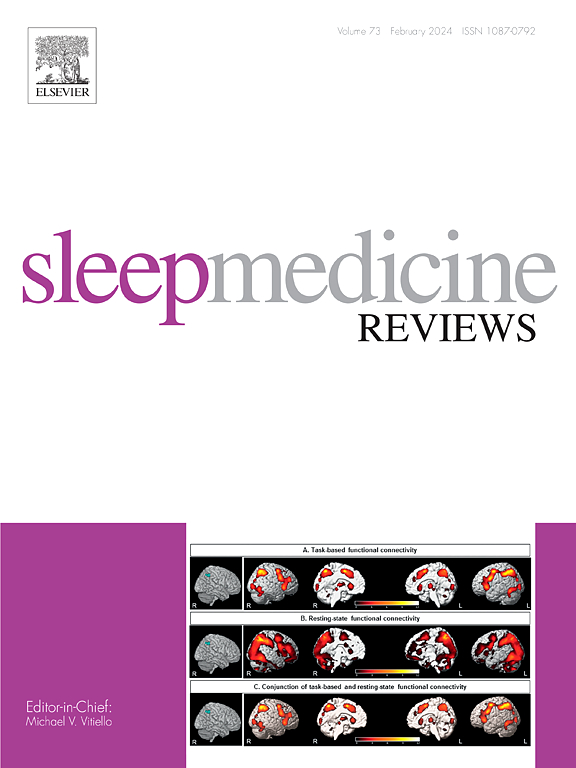Ambient chemical and physical approaches for the modulation of sleep and wakefulness
IF 9.7
1区 医学
Q1 CLINICAL NEUROLOGY
引用次数: 0
Abstract
Humans spend a third of their lives asleep. While the sleep-wake behaviors are primarily modulated by homeostasis and circadian rhythm, several ambient chemical and physical factors, including light, sound, odor, vibration, temperature, electromagnetic radiation, and ultrasound, also affect sleep and wakefulness. Light at different wavelengths has different effects on sleep and wakefulness. Sound not only promotes but also suppresses sleep; this effect is mediated by certain nuclei, including the pedunculopontine nucleus and inferior colliculus. Certain sleep-promoting odorants regulate sleep through the involvement of the olfactory bulb and olfactory tubercle. In addition, vibrations may induce sleep through the vestibular system. A modest increase in ambient temperature leads to an increase in sleep duration through the involvement of the preoptic area. Electromagnetic radiation has a dual effect on sleep-wake behaviors. The stimulation produced by the ambient chemical and physical factors activates the peripheral sensory system, which converts the chemical and physical stimuli into nerve impulses. This signal is then transmitted to the central nervous system, including several nuclei associated with the modulation of sleep-wake behaviors. This review summarizes the effects of ambient chemical and physical factors on the regulation of sleep and wakefulness, as well as the underlying neurobiological mechanisms.
调节睡眠和觉醒的环境化学和物理方法。
人类一生中有三分之一的时间是在睡眠中度过的。虽然睡眠-觉醒行为主要受体内平衡和昼夜节律调节,但光、声音、气味、振动、温度、电磁辐射和超声波等一些环境化学和物理因素也会影响睡眠和觉醒。不同波长的光对睡眠和觉醒有不同的影响。声音不仅能促进睡眠,还能抑制睡眠;这种作用由某些神经核介导,包括足底核和下丘。某些促进睡眠的气味通过嗅球和嗅小结的参与来调节睡眠。此外,振动也可通过前庭系统诱导睡眠。环境温度的适度升高会通过视前区的参与导致睡眠时间的延长。电磁辐射对睡眠-觉醒行为有双重影响。环境中的化学和物理因素产生的刺激会激活外周感觉系统,该系统会将化学和物理刺激转化为神经冲动。然后,这一信号被传递到中枢神经系统,包括与调节睡眠-觉醒行为相关的几个神经核。本综述总结了环境化学和物理因素对睡眠和觉醒调节的影响,以及潜在的神经生物学机制。
本文章由计算机程序翻译,如有差异,请以英文原文为准。
求助全文
约1分钟内获得全文
求助全文
来源期刊

Sleep Medicine Reviews
医学-临床神经学
CiteScore
20.10
自引率
3.80%
发文量
107
期刊介绍:
Sleep Medicine Reviews offers global coverage of sleep disorders, exploring their origins, diagnosis, treatment, and implications for related conditions at both individual and public health levels.
Articles comprehensively review clinical information from peer-reviewed journals across various disciplines in sleep medicine, encompassing pulmonology, psychiatry, psychology, physiology, otolaryngology, pediatrics, geriatrics, cardiology, dentistry, nursing, neurology, and general medicine.
The journal features narrative reviews, systematic reviews, and editorials addressing areas of controversy, debate, and future research within the field.
 求助内容:
求助内容: 应助结果提醒方式:
应助结果提醒方式:


